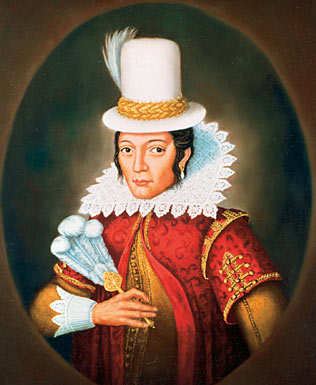Images of a Legend

POCAHONTAS
1994,
Mary Ellen Howe
After
nearly four centuries of mythmaking, could Pocahontas's true appearance be
resurrected? Virginia portrait artist Mary Ellen Howe hoped that it could, and
she spent six years researching and producing what may be the most accurate
portrait of Pocahontas that can be painted. Howe's starting point was de
Passe's 1616 engraving, but unlike the painter of the copy made in the 1700s,
she made certain that the colors of her work were appropriate: Pocahontas's
beaver hat is white, her hair black, and her skin tone modeled after that of
Pamunkey, Mattoponi, and Rappahannock Indians. As she studied the facial
structures of modern Virginia Indians, Howe noticed the same overbite, dimpled
chin, and high cheekbones that van de Passe saw in Pocahontas. Asked why she
devoted herself to this endeavor, Howe explains that she could not forget a
woman whose extraordinary accomplishments included the adoption of a foreign
culture and the winning of acceptance by 17th-century English society.